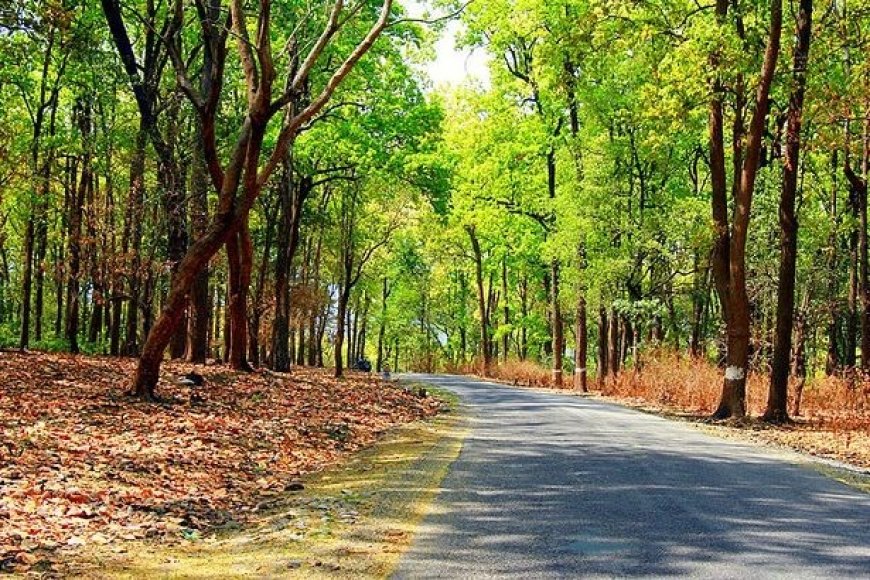Bird Watching in Jim Corbett: A Paradise for Ornithologists

Jim Corbett National Park, nestled in the foothills of the Himalayas in Uttarakhand, India, is renowned not only for its stunning landscapes and diverse wildlife but also as a premier destination for bird watching. Home to over 600 species of birds, the park provides a unique opportunity for ornithologists and bird enthusiasts alike to observe a wide variety of avian life in their natural habitat. From the majestic Great Indian Hornbill to the elusive Lesser Florican, Jim Corbett serves as a paradise for bird watchers.
A Birdwatcher’s Haven
The diverse ecosystems within Jim Corbett National Park—ranging from dense forests and grasslands to rivers and marshes—create ideal conditions for a rich variety of bird species. Whether you are a seasoned ornithologist or a casual birdwatcher, the park offers something for everyone. The best time to visit is between November and March when migratory birds flock to the park, adding to the already abundant resident bird population.
For those planning a visit, the 2 nights 3 days package in Jim Corbett is highly recommended. This package typically includes guided bird-watching tours, accommodations in comfortable lodges, and meals. A knowledgeable guide can enhance your experience, pointing out various species and sharing fascinating insights about their behavior and habitats. Early morning and late afternoon are the best times for bird watching, as many species are most active during these hours.
The Rich Avifauna of Jim Corbett
Jim Corbett's avifauna is a birdwatcher’s dream. Among the most notable species you might encounter are the vibrant Indian Pitta, the striking Blue-throated Barbet, and the graceful Crested Serpent Eagle. Additionally, the park is home to a significant number of migratory birds, including the European Roller and the Indian Cuckoo. Each bird species contributes to the symphony of sounds that fills the park, making every visit a unique auditory experience.
The 2 nights 3 days package in Jim Corbett often includes visits to key bird-watching spots within the park, such as the Bijrani and Dhikala zones. These areas are particularly rich in bird diversity. As you traverse the winding paths of these regions, be prepared to spot a plethora of feathered friends—each turn in the trail holds the promise of a new discovery.
Ideal Bird Watching Locations
One of the highlights of bird watching in Jim Corbett is the vast range of habitats available to explore. The Kosi River, for instance, is a favorite haunt for water birds. Here, you can observe species such as the River Tern and the Little Egret. Additionally, the open grasslands are the perfect setting to spot ground-nesting birds like the Indian Skimmer and the Sarus Crane.
Another excellent location is the marshy areas of Dhikala, where you can witness the spectacular sight of the Great Crested Grebe. The wetlands attract numerous migratory birds, making it an essential stop for bird watchers. With the 2 nights 3 days package in Jim Corbett, you can enjoy guided tours to these hotspots, ensuring that you don’t miss out on the best opportunities for observation.
The Role of Conservation
Bird watching in Jim Corbett also plays a significant role in conservation efforts. The park's management works tirelessly to protect the diverse species that call it home, focusing on habitat preservation and creating awareness about the importance of biodiversity. Participating in bird-watching tours helps support these initiatives, as a portion of the fees often goes towards conservation projects.
Moreover, the involvement of local communities in conservation efforts has created a sustainable model that benefits both the environment and local livelihoods. Many bird watching guides are locals who possess in-depth knowledge of the area, enhancing the experience for visitors while also fostering a sense of stewardship for their natural heritage.
Birdwatching Activities and Tips
For those eager to make the most of their bird watching experience, here are some tips to consider:
-
Bring the Right Equipment: A pair of good binoculars and a field guide can significantly enhance your birdwatching experience. Binoculars allow for close observation without disturbing the birds, while a field guide can help you identify species on the spot.
-
Be Patient and Quiet: Birds are naturally skittish. Move quietly and be patient. Often, the best views come after a period of stillness.
-
Dress Appropriately: Wear muted colors to blend into the surroundings, and dress in layers to accommodate the changing weather conditions, especially during early morning and late evening outings.
-
Join Guided Tours: Opt for guided bird-watching tours offered in the 2 nights 3 days package in Jim Corbett. Experienced guides can lead you to the best spots and share invaluable insights about the birds and their habitats.
-
Respect Wildlife: Always observe birds from a distance, and refrain from feeding or trying to touch them. Maintaining a respectful distance ensures their safety and preserves their natural behavior.
Conclusion
Bird watching in Jim Corbett National Park is not just an activity; it’s an experience that connects you with nature in a profound way. The park’s rich avifauna, combined with its stunning landscapes, makes it a top destination for bird lovers. Whether you’re exploring the Kosi River or venturing into the depths of Bijrani, each moment spent in the park adds to the joy of discovery.
If you're considering a trip, the 2 nights 3 days package in Jim Corbett offers a comprehensive experience, allowing you to immerse yourself in this paradise for ornithologists. With expert guides, comfortable accommodations, and the beauty of nature surrounding you, Jim Corbett promises an unforgettable adventure filled with the sights and sounds of its avian inhabitants. Prepare to be enchanted by the myriad of colors and calls that await you in this birdwatcher's paradise
What's Your Reaction?
 Like
0
Like
0
 Dislike
0
Dislike
0
 Love
0
Love
0
 Funny
0
Funny
0
 Angry
0
Angry
0
 Sad
0
Sad
0
 Wow
0
Wow
0




















































